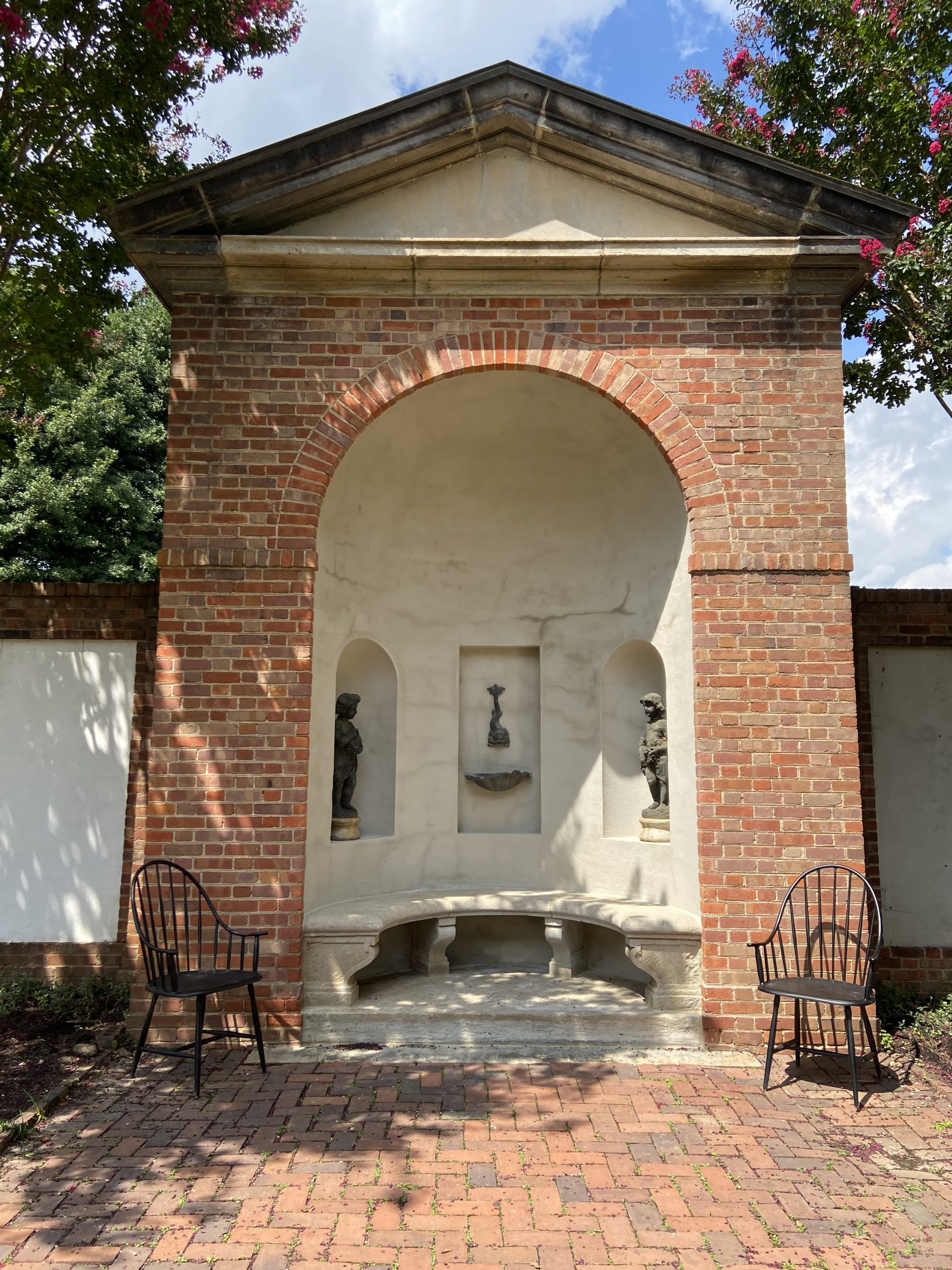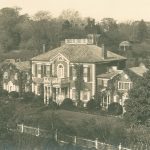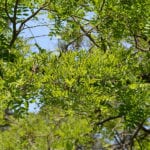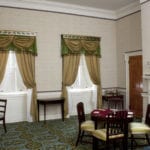Preservation requires understanding the history and construction of the object or structure being preserved if it is to be done correctly. If not careful, our own present-day aesthetic sensibilities might lead us to make decisions that have nothing to do with how the object was originally designed, constructed, or even painted. Careful research not only benefits how a feature is preserved, but also how it gets interpreted.
The National Society of The Colonial Dames of America (NSCDA) purchased the house we now call Dumbarton House and the associated property in 1928. The Dames decided they would bring the house back to its original appearance. So, they hired an architect, Horace Peaslee, and a consultant, architectural historian Fiske Kimball. At the time, Kimball was also the Director of the Philadelphia Museum of Art. As part the restoration process, workers built a retaining wall, as well as the north boundary wall, and filled in the land behind the house to level it out with the front.
Fiske Kimball referred to Dumbarton House as “one of the very finest and most beautiful houses in the United States.” He decided that the perfect inspiration for a north garden feature was William Kent. Kent was a mid-eighteenth century English landscape architect. You can see in figure 1 a Kent landscape feature that clearly influenced Kimball’s design of the North Garden Niche, although the Dumbarton House feature is much smaller in scale. In June 1931, Kimball presented the Dames with a design (figure 2) which, aside from a few modifications, was constructed for the North Garden. It will soon be 100 years old.

The Dames are noted for the structures they have preserved. They purchased and elected to restore Dumbarton House’s exterior and interior to what was as close to the original appearance as possible at the time. It is the Niche, however, that is their contribution to the historic landscape around the house. It is a part of the landscape that represents the Dames and the time in which it was constructed. Its preservation represents a part of the mission of the NSCDA and Dumbarton House, but it is also about preserving the identifying elements of the NSCDA’s own history.

The Niche has received very little maintenance since its construction in 1931. However, by 2013 cracks and delamination of the stucco in the Niche had started to become highly visible. Portions of the north wall that extend to the west of the Niche received preservation work on the stucco panels in 2012, creating bright white panels on the walls stretching to the west. However, it was discovered after the 2012 work that the architect, Horace Peaslee, had required, during the original construction of the Niche and wall, that all stucco elements be tinted to match the color of the Aquia sandstone features. Aquia sandstone is a locally quarried sandstone that has a slightly off white/tan hue with darker streaks, which are formed by iron deposits running through the stone. This discovery in the NSCDA Archives helped us understand how both the Niche and the wall should look with respect to its original construction.
In 2019, we applied for and received a National Trust for Historic Preservation grant to offset the cost of repairing the Niche. The goal of the work was not only to preserve and restore the Niche’s stucco interior but for the work to inform how we would go about doing further stucco work on parts of the 1931 restoration.
EverGreene Architectural Arts (EverGreene) was contracted to assess the garden niche and design and implement an appropriate treatment for the interior surface and sandstone bench. EverGreene assessed the niche in July 2020 and observed that there were multiple cracks throughout the niche wall. A large horizontal crack spanned across the niche at mid-level where the two smaller niches and recessed rectangle are located. There were cracks beneath the sandstone bench as well as areas of stucco loss. Overall, the limewash coating was lost on most of the surface area. The pointing of the Aquia sandstone base and bench was deteriorated and there were open joints. In addition, the central lead figure of a fish located in the recessed rectangle had become loose and was hanging off center.

Figure 3: Before conservation 
Figure 4: After conservation 
Figures back in place
Based on EverGreene’s assessment, a treatment plan was designed and implemented. The cracks were filled and the niche was limewashed with a color-matched wash. A few different colors were proposed before a tan-beige color was chosen. Two applications of limewash were applied and the limewash was misted repeatedly for the following week to ensure that the limewash dried properly. The deeper, larger cracks dried at a slower rate than other areas because of the depth of the cracks and amount of moisture necessary to properly in-fill them during patching. The sandstone bench and exterior base joint were repointed with an appropriate color matched mortar. (Compare figures 3 and 4 for before and after results.)
We were able with the help of the NSCDA Archives, the National Trust for Historic Preservation, and Evergreene to restore the Niche to its original splendor. There is still work to be done on the other stucco elements around the site but now we have the information and tools needed to assist us in the preservation work.
By Jerry L. Foust, PhD. Historic Site Director















